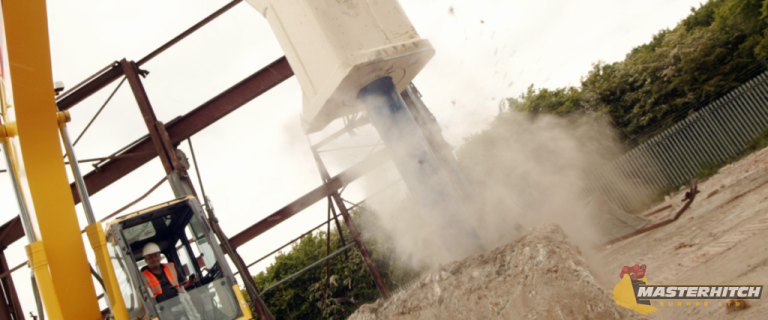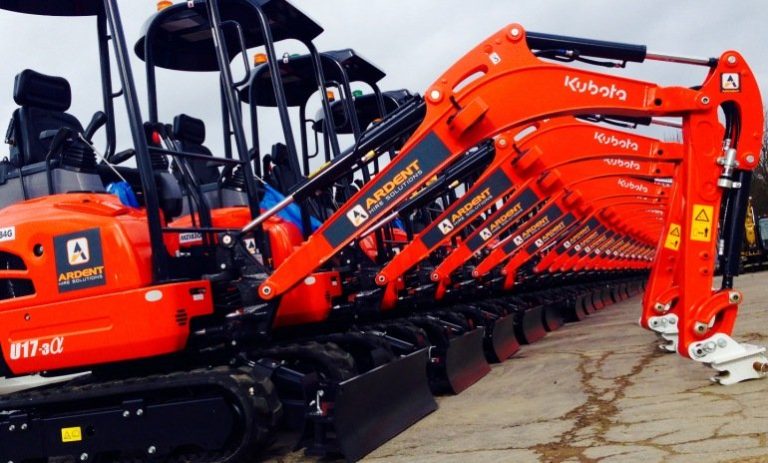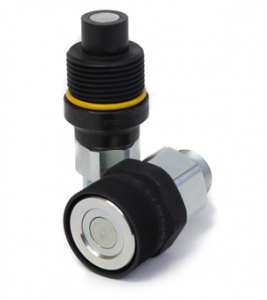Excavators Provide Varied Options For Demolition & Construction Contractors
Keywords: digger hydraulic breaker, skid steer hydraulic hammer
Excavators have grappled, sheared, sorted and broken their way into a prominent position in construction, demolition and C&D recycling. With an arsenal of tools at their disposal, these machines continue to play diverse roles in the industry.
Whether digging on the construction site, demolishing a structure or handling debris, excavators come in all shapes and sizes and boast a wide array of distinctive features.
They come compact or full-sized, tracked or wheeled, standard or long-reach and any combination in between. How to best use these features is the challenge for contractors and recyclers looking to pick the right excavator for the job at hand.
TOUGHING IT OUT
“Not all excavators are created equal,” says Nell LeBlanc, senior marketing consultant for Caterpillar Inc., Peoria, Ill. “They’ve developed into the ‘work horse’ of a demolition contractor’s equipment fleet.”
No matter what job needs tackling, strength is an overriding basic feature any contractor or recycler should be looking for in a machine, says Paul Hill, products manager at Liebherr America Inc., Newport News, Va.
“You’ve got to be looking at the strength of the undercarriage components,” he says. “There are plenty of machines out there, but they’ve got to be built strong, built tough.”
The stronger, more durable the machine is, the better investment it makes, according to David Caldwell, product specialist for Komatsu America Inc., Vernon Hills, Ill.
Because machines have to stand up to whatever material they’re handling, Caldwell says frame strength should be a primary concern.
Stability also figures into the general excavator equation, according to Carl Heggen, product manager for Komatsu’s larger hydraulic excavators.
“You need a heavily-built machine that will live in severe demolition applications, and you need a high degree of stability. Demolition excavators are constantly reaching up into structures with heavy severe-duty attachments, breaking and loading heavy unbalanced loads. Stability is a critical concern for productive and safe operation,” he says.
LeBlanc agrees and adds that because demolition contractors often operate their machinery at its maximum reach, heavy-duty structures and extra amounts of counter weight are important features.
MULTIPLE DUTIES
Because versatile attachments are part of what make excavators so useful, another general principle to guide one’s choice is how the machine handles those attachments.
The most common attachments used at demolition sites are hydraulic breakers, thumbs and buckets, says Caldwell. And depending on the job, shears, grapples, hammers and universal processors often prove useful when attached to excavators.
But no matter what they’re using, the way a machine works with its attachments is a key feature to consider when choosing an excavator. The wider array of tools it can work with, the more versatile the machine and more useful to the contractor, says LeBlanc. “Excavators that are equipped with the correct hydraulic controls and work tools installed are the one single type of machine best suited to perform all required tasks,” he says.
“You’ve got to ask ‘How easy is it to change attachments?’ and ‘How do you operate the attachments?’” says Lance Mathern, marketing manager for Bobcat Co., West Fargo, N.D.
The ability to control tools easily and efficiently is an important factor for contractors and recyclers to consider. Mathern says contractors should pay attention to whether controls are operated by joystick or foot pedal.
The ability to adjust the hydraulic flow to attachments is another consideration contractors should make when choosing an excavator, says Komatsu’s Heggen.
Compatibility with a wide range of tools is also important, especially to demolition contractors and C&D recyclers, who tend to handle an extremely diverse amount of material, says Hill.
“You’ve got to be able to use the biggest selection of working attachments,” he says. “Pay attention to the boom and stick, not just to what’s on the end.”
Using a whole other realm of attachments like grapples and shears, C&D recyclers are making use of excavators, too.
With scrap prices soaring, C&D recyclers are likely to use excavators to crush concrete not only to remove steel from the recyclable concrete, but “also to cut that steel down to transportable size, Heggen says.
In addition, the excavator’s ability to reach long distances and operate with fine control make it ideal for sorting and transporting C&D material, according to Heggen.
“The excavator is also called upon to work large stockpiles of construction debris, sorting steel, brick, wood–whatever the building is made of,” he adds. “The excavator is the best tool for segmenting valuable recyclable components from construction material heading to landfill.”
And contractors shouldn’t overlook operator comfort when choosing an excavator, says Dave Wolf, product brand manager for Case Construction, Racine, Wis. “Operators spend a good portion of their day in and around an excavator,” he says. Wolf says the size of the cab, visibility and the ability to adjust the seat are all important considerations to make when choosing an excavator.
Anyone keeping operator comfort in mind might want to opt for a closed-cab machine that affords the person behind the wheel some climate control and keeps him or her out of the dust, adds Mathern.
Contractors also need to be aware of guarding packages that protect the cab, Wolf says, such as brick guards, screen guards and falling object guards (FOGS). “Guarding for the drive motors must be substantial to protect against the tough conditions,” he says.
AN INSIDE TRACK
With so many different tools and features, the job site can best determine the excavator platform and size that should be used, says Mathern. For instance, because many demolition contractors are retiring their wrecking balls in favor of controlled demolition, smaller machines are playing more important roles in dismantling.
“It’s changed the way (demolition contractors) do their business,” says Reece Norwood, product manager for Kobelco America Inc., Stafford, Texas. Instead of traditional demolition smashing, contractors are paying closer attention to selectively dismantling structures, often trying to leave portions of the structure intact–“selectively pruning, in many cases,” says Norwood. “They’re getting a machine in there that can tear down a wall, but leave an existing shell intact,” he says.
This has led to more compact or mini-excavators being put to use at demolition sites. Trade the hydraulic breaker for a bucket combination, and the same machine can be used to clean up debris on the inside and out, he says.
Another trend boosting the importance of the compact excavator is the growing popularity of structural rehabilitation projects, according to Heggen.
“As the costs of new construction continues to rise, we find there’s greater and greater demand for rehabbing older existing structures,” he says. “Sometimes rehab is much more cost effective than new construction, and you can save a building just by bringing it up to date.” Mini-excavators shine on these inside jobs, helping to gut the existing interior structure to prepare it for remodeling and revised floor plan layouts.
“Rehabilitation of older structures requires smoother, more precise control of the excavator and attachment, and being able to separate the rehab structure from materials to discard,” says Case’s Wolf.
The trend toward controlled demolition is also putting a heightened emphasis on a machine’s reach, according to Cory Gremonprez, excavator product manager with Volvo Construction Equipment North America Inc., Asheville, N.C.
“High lift–100-foot reach fronts–is a trend that is gaining popularity,” he says. “This allows an operator to dismantle structures from the top down.”
The space in which the work is being done also determines whether a contractor should look into a model that offers minimized swing, says Wolf. “The boom is pinned closer to the center of the machine, which allows the machine to operate in a tighter workspace. Minimum tail swing reduces concern for objects that might be stuck around the machine,” he says.
Bridge construction projects are another place where reduced or zero tail swing machines are particularly advantageous, according to Bret Berghoefer, brand marketing manager for New Holland Construction, Carol Stream, Ill. He says zero tail swing excavators are ideal for working near operational lanes of traffic.
In addition to size, swing and reach, the job site also helps determine whether to go with a wheeled or tracked excavator, says Hill.
“It often depends on ground condition,” he says. “Wheeled machines are far more mobile, so they do very well on concrete sites. Tracked machines are not as versatile that way, but when you’re crawling across soft ground to take down a building, the crawler will go right over it.”
Contractors should also consider when the work will be done, says Wolf.
“They should ask, ‘Is the work going to be performed at night, near residences, where noise will be a concern?’” he says. “A wheeled excavator may be the machine to use because of its ability to reposition across a hard surface with less noise than a tracked excavator.” The contractor should also decide if the material being processed will be more aggressive on an undercarriage or tires, he says.
And while a wheeled machine would obliterate a tracked model in a drag race, Heggen says what the tracked excavator lacks in speed and mobility, it makes up for in strength and stability.
“A tracked model is not nearly as fast,” he says. “It can only run about 1.5 to 3.5 miles per hour, but it has a much more stable base. You can generally reach further and lift heavier attachments and heavier loads on the end of a tracked machine.”
But the speed of a wheeled excavator can come in handy, according to Heggen.
“There are trade-offs with both,” he says. “As far as using it on a large site where you have to be half a mile away one minute and back the next, a wheeled excavator is a great choice.”
And if contractors want the strength and stability of a tracked machine but hope to offer more protection to the ground surface they’re working on, they can consider the advantages of bolt- or pin-on rubber track pad inserts on a tracked excavator, says New Holland’s Berghoefer.
While excavators come in all sizes for a variety of purposes, manufacturers agree that a strong, durable and versatile machine is the one that will best serve any buyer in any sector. And when determining how to best combine all the variable features, contractors and recyclers should look no further than their job sites to guide them in picking the right piece of equipment.
COMPACT FIT
While demolition is still primarily a big machine job, compact excavators–machines typically under 14,000 pounds–are finding their niches, both figuratively and literally, by squeezing into small spaces, says Carl Heggen of Komatsu America Inc., Vernon Hills, Ill.
“Mini-excavators are becoming more and more popular on demolition sites where their small size and tight tail swing allows them to work in confined areas,” he says.
The advantage of a compact, or mini-excavator, is “the ability to move the machine inside,” according to Lance Mathern of Bobcat Co., West Fargo, N.D.
“Controlled demolition almost lends itself toward smaller equipment,” he says. “You’re taking it apart piece by piece and having a small piece of equipment lets you get in, sort through and be very careful so you’re getting the most for your recycling efforts.”
Using the machine inside is a relatively new development, fueled by the trend toward controlled demolition, says Komatsu product specialist David Caldwell.
“With environmental concerns that surround imploding a structure, many contractors are now using excavators,” he says. Compact excavators are often small and light enough to be loaded on freight elevators and moved from floor to floor so they can demolish from the inside, according to Caldwell.
The author is assistant editor of Construction & Demolition Recycling and can be contacted at jgubeno@gie.net.
COPYRIGHT 2005 G.I.E. Media, Inc.
COPYRIGHT 2005 Gale Group




